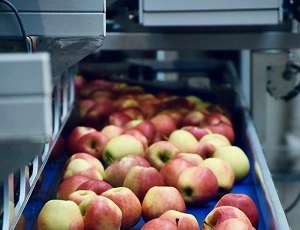Tel: +86-532-84673097
Mobile & Whatsapp & Wechat:+86-13589340409
Mobile & Whatsapp & Wechat:+86-13589340409
In the realm of industrial efficiency, the role of the Rubber Heat Resistant Conveyor Belt cannot be overstated. This article delves into the intricate production processes and rigorous quality controls that ensure the reliability and stability of these essential components. As manufacturers seek ways to enhance production efficiency and reduce costs, the Rubber Heat Resistant Conveyor Belt emerges as a key player, minimizing downtime, and optimizing energy consumption.

When it comes to producing the heat resistant conveyor belt, precision and quality control are paramount. The production process involves a series of meticulously executed steps to guarantee a product that can withstand high temperatures while maintaining its structural integrity. From the selection of raw materials to the intricate weaving of layers, every stage is a testament to the dedication to quality.
The heat-resistant properties are achieved through advanced formulations of rubber compounds, reinforcing materials, and specialized manufacturing techniques. These belts undergo rigorous testing to ensure they meet industry standards for durability and performance. The result is a product that not only meets but exceeds expectations, providing a reliable foundation for efficient industrial operations.
Rubber Heat Resistant Conveyor Belts play a pivotal role in boosting production efficiency and curbing costs. One significant contribution lies in minimizing downtime. The ability of these belts to withstand high temperatures ensures continuous operation even in demanding industrial environments. This resilience translates into fewer interruptions, enabling a smoother workflow and higher overall productivity.
Moreover, these conveyor belts contribute to reducing energy consumption, aligning with sustainability goals. The efficient transfer of materials, coupled with the belts' heat-resistant nature, leads to lower friction and energy losses during transportation. This dual advantage not only positively impacts the environment but also contributes to the bottom line by trimming operational expenses.
Selecting and implementing Rubber Heat Resistant Conveyor Belts involves a strategic decision-making process. Understanding the specific needs of your operation is crucial for reaping the maximum benefits these belts offer. Here are key considerations for businesses aiming to optimize their production processes:
Temperature Requirements:
When selecting a heat-resistant conveyor belt, it's essential to match the temperature resistance with the specific conditions of your operation. Different manufacturing processes generate varying levels of heat, and choosing a belt that can withstand these conditions is critical for longevity and performance.
Material Compatibility:
The nature of the materials being transported should guide the choice of conveyor belts. The Rubber Heat Resistant Conveyor Belt is versatile, but ensuring compatibility with the materials it will handle is crucial for long-term reliability. The right combination of materials will prevent premature wear and tear, ensuring a longer lifespan for the belt.
Operational Environment:
Consider the overall working environment, including factors like humidity, dust, and abrasion. Some Rubber Heat Resistant Conveyor Belts come with additional features, such as anti-static properties or enhanced resistance to abrasive materials, making them better suited for specific environments.
In the pursuit of efficient production, the Rubber Heat Resistant Conveyor Belt emerges as a crucial ally. Its production involves a meticulous process, ensuring the highest standards of quality. Beyond reliability, these belts significantly impact production efficiency by reducing downtime and lowering energy consumption. The strategic selection and implementation of these belts empower businesses to maximize productivity and stay ahead in the competitive industrial landscape.
If you are interested in heat resistant conveyor belts, you can contact Rentone Belt, a professional fabric conveyor belt factory. Engineered with a robust carcass and EPDM rubber cover, our belts excel in transporting high-temperature materials, ranging from sinter to hot castings, across extreme environments. Their classification into four temperature grades ensures precise suitability for diverse operational needs, making them indispensable assets for metallurgy, construction, steel plants, foundries, and fertilizer and chemical plants.
Learn more about Rentone Belt’s Fabric Conveyor Belts:
wholesale oil resistant conveyor belt
acid and alkali resistant conveyor belt